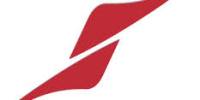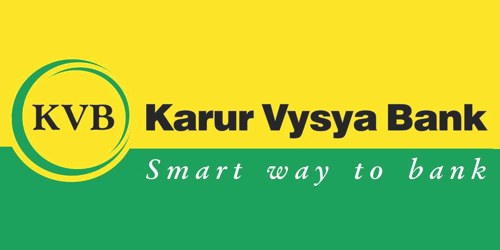A report on the “Leverage and its impacts on company’s performance and growth”
Executive Summary
The Term Paper on “Leverage and its effects on company’s growth and performance” is given to us as a course requirement of Financial Management. We have prepared this analytical term paper on the basis of our text books, other reference books, class lectures and internet.
The term paper’s given topic was: ‘Leverage and its impacts on company’s performance and growth’ so we have tried our best to prepare this report according to all requirements. In this term paper we have discussed about Leverage, its definitions, classification, implications on company’s performance, risk, equity and growth by mathematical examples.
As a course requirement of financial management, this Term Paper has created a great opportunity for us to achieve practical knowledge about these essential financial terms which will greatly help us in our future work life as well as in student life.
Acknowledgement
First of all, our respectful gratitude for Allah almighty who had enabled us to complete the term paper. For fear of sounding like a vote thanks speech, we could not but thanks to Md. Nazmul Islam, Marvelous course teacher who gave many advices for preparing this report. There is of course Contribution of some very special people like friends and website is also mentionable here.
Our heartiest gratitude to our reverend teacher and advisor of this course Md. Nazmul Islam whose enthusiastic guidance and critical comments during the entire phase of the study made it possible for us to prepare this report. Our debt to him is warmly acknowledged.
We would also like to convey our sincerest gratitude to website through which we have got many data and information for preparing this report.
Finally, we are also thankful to all the group members, friends circle for their friendly co-operation and help. We also got very supportive environment from our parents to prepare this report.
Table of Contents
No. | Content | Page no. |
| 1 | Letter of transmittal | |
| 2 | Executive Summary | |
| 3 | Acknowledgement | |
| 4 | Objectives and methodology | |
| 5 | Leverage | |
| 6 | Classifications of Leverage | |
| 7 | Operating leverage | |
| 8 | Degree of Operating Leverage | |
| 9 | Implications of Operating leverage | |
| 10 | Business Risk | |
| 11 | Financial Leverage | |
| 12 | Degree of Financial Leverage | |
| 13 | DFL and Cost of Capital | |
| 14 | Implications of Financial Leverage | |
| 15 | Financial Risk | |
| 16 | Total Leverage | |
| 17 | Degree Of Total Leverage | |
| 18 | Implications of Total Leverage | |
| 19 | Impacts of Leverage on company’s performance and growth | |
Objectives and Methodology
The main objective for preparing this term paper is finding out the “Leverage and its impacts on company’s performance and growth.” These are the other objectives toward preparing this term paper:
ü To fulfill our course requirement.
ü To gain practical knowledge of Financial Management practices.
ü To understand the importance of leverage in determining the capital structure of a company.
ü To understand the different types of leverages and there implications.
ü To understand the leverages by analyzing examples.
We have followed our class lectures on this topic, our text book, additional text books and Internet to prepare this analytical term paper.
Leverage
Leverage can be defined as the ability of a firm to use its fixed cost assets or funds to magnify the returns to shareholders. According to J. F. Weston, Scott, Besley and E. F. Brigham, “Leverage is created when a firm has fixed cost associated either with its sales and production operation or with its financing characteristics.”
In physics, leverage implies the use of a lever to raise a heavy object with a small force. In politics, if people have leverage, their smallest word or action can accomplish a lot. In business terminology, a high degree of operating leverage, other factors held constant, implies that a relatively small change in sales results in a large change in ROE. Leverage is the use of a relatively small investment or a small amount of debt to achieve greater profits. That is, leverage is the use of assets and liabilities to boost profits while balancing the risks involved.
Leverage in other sense is the degree to which an investor or business is utilizing borrowed money. The higher the degree of leverage, the higher the degree of risk and rate of return. Companies that are highly leveraged may be at risk of bankruptcy if they are unable to make payments on their debt; they may also be unable to find new lenders in the future. Leverage is not always bad, however; it can increase the shareholders’ return on their investment and often there is tax advantages associated with borrowing.
The objective of Financial Management is to maximize the wealth of organization and to magnify the returns to shareholders. Financing and investment decisions are very important in maximizing shareholder’s returns. The fixed cost assets or funds of a company play important role in maximizing EPS, ROE etc.
Classifications of Leverage
Basically, leverages are classified into two types. But, it can be ultimately three types. These are:
1) Operating Leverage
2) Financial Leverage
3) Total/Combined Leverage.
Operating Leverage
Operating leverage may be defined as the firms ability to use fixed operating cost to magnify the effects of changes in sales on its operating profit or earning before interest and texes (EBIT).
Operating leverage is the extent to which a firm uses fixed costs in producing its goods or offering its services. Fixed costs include advertising expenses, administrative costs, equipment and technology, depreciation, and taxes, but not interest on debt, which is part of financial leverage. By using fixed production costs, a company can increase its profits. If a company has a large percentage of fixed costs, it has a high degree of operating leverage. Automated and high-tech companies, utility companies, and airlines generally have high degrees of operating leverage.
As an illustration of operating leverage, assume two firms, A and B, produce and sell widgets. Firm A uses a highly automated production process with robotic machines, whereas firm B assembles the widgets using primarily semiskilled labor. Table 1 shows both firms’ operating cost structures.
Highly automated firm A has fixed costs of $35,000 per year and variable costs of only $1.00 per unit, whereas labor-intensive firm B has fixed costs of only $15,000 per year, but its variable cost per unit is much higher at $3.00 per unit. Both firms produce and sell 10,000 widgets per year at a price of $5.00 per widget.
Firm A has a higher amount of operating leverage because of its higher fixed costs, but firm A also has a higher breakeven point—the point at which total costs equal total sales. Nevertheless, a change of I percent in sales causes more than a I percent change in operating profits for firm A, but not for firm B. The “degree of operating leverage” measures this effect. The following simplified equation demonstrates the type of equation used to compute the degree of operating leverage, although to calculate this figure the equation would require several additional factors such as the quantity produced, variable cost per unit, and the price per unit, which are used to determine changes in profits and sales:
Operating leverage is a double-edged sword, however. If firm A’s sales decrease by I percent, its profits will decrease by more than I percent, too. Hence, the degree of operating leverage shows the responsiveness of profits to a given change in sales.
Degree of Operating Leverage (DOL)
The degree of operating leverage (DOL) measures the effect of a change in sales volume on earnings before interest and taxes (EBIT). It is defined as the percentage change in EBIT associated with a given percentage change in sales:
| DOL = | |
Implications
Operating Breakeven:
The breakeven quantity can be calculated by recognizing that operating breakeven occurs when ROE is 0, hence when earnings before interest and taxes (EBIT) is 0.
EBIT = PQ – VQ – F = 0.
Here P is average sales price per unit of output, Q is units of output, V is variable cost per unit, and F is fixed operating costs. If we solve for the breakeven quantity, QBE, we get this expression:
|
Breakeven analysis shows the effect of increased investments in fixed assets that lower variable costs but increase fixed costs. A decision to go with heavier investment in fixed assets and to increase operating leverage will, to a large extent, be determined by your perception of the economy and of the ability of your business to meet higher sales levels necessary to support the fixed costs. Also consider the degree to which sales expansion is practical. Increased volume can result in price weakness or higher-than-expected costs as you exceed your optimum levels of production.
DOL and Business Risk
Business risk depends in part on the extent to which a firm builds fixed costs into its operations if fixed costs are high, even a small decline in sales can lead to a large decline in ROE. So, other things held constant, the higher a firm’s fixed costs, the greater its business risk. Higher fixed costs are generally associated with more highly automated, capital intensive firms and industries. However, businesses that employ highly skilled workers who must be retained and paid even during recessions also have relatively high fixed costs, as do firms with high product development costs, because the amortization of development costs is an element of fixed costs.
Business risk in a stand-alone sense is a function of the uncertainty inherent in projections of a firm’s return on invested capital (ROIC), defined as follows:
Here NOPAT is net operating profit after taxes and capital is the sum of the firm’s debt and common equity. (We ignore preferred stock in this section.) If a firm uses no debt, then its interest payments will be zero, its capital will be all equity, and its ROIC will equal its return on equity, ROE:
Financial Leverage
Financial leverage is defined as the potential use of financial costs to magnify the effects in EBIT on the firm’s Earning per share (EPS). So, the extent to which fixed-income securities (debt and preferred stock) are used in a firm’s capital structure is called as financial leverage.
Financial leverage involves changes in shareholders’ income in response to changes in operating profits, resulting from financing a company’s assets with debt or preferred stock. Similar to operating leverage, financial leverage also can boost a company’s returns, but it increases risk as well. Financial leverage is concerned with the relationship between operating profits and earnings per share. If a company is financed exclusively with common stock, a specific percentage change in operating profit will cause the same percentage change in shareholder earnings. For example, a 5 percent increase in operating profit will result in a 5 percent increase in shareholder earnings.
If a company is financed with debt or is “leveraged,” however, its shareholder earnings will become more sensitive to changes in operating profit. Hence, a 5 percent increase in operating profits will result in a much higher increase in stockholder earnings. Nevertheless, financial leveraging makes companies equally susceptible to greater decreases in stockholder earnings if operating profits drop.
Degree of Financial Leverage (DFL)
The degree of financial leverage (DOFL) is defined as the percent change in EPS that results from a given percent change in EBIT, and it is calculated as:
DFL and Cost of Capital
Here, relation between degree of financial leverage (DFL) and cost of capital is illustrated as following:
(Ko) Cost of Capital | DFL | (weight) | WACC (Ko) | |
| Debt capital | 6.34% | 30% | 30% | 1.90% |
| Preferred capital | 10.94% | 10% | 1.09% | |
| Equity capital | 12% | 60% | 7.20% | |
| WACC | 10.19% |
The higher the degree of financial leverage, the lower the weighted average cost of capital (WACC). But, as the higher degree of financial leverage increases the business risk, so the firms use debt capital to a reasonable rate.
Implications
Companies with significant amounts of debt in contrast with their assets are referred to as being highly leveraged and their shareholder earnings are more unpredictable than those for companies with less debt. Lenders and financial analysts often measure a company’s degree of financial leverage using the ratio of interest payments to operating profit.
From the perspective of shareholders, financing using debt is the riskiest, because companies must make interest and principal payments on debt as part of their contract with their lenders, but they need not pay preferred stock dividends if their earnings are low. Nevertheless, financing with preferred stock will have the same kind of leveraging effect as debt financing as illustrated above.
Generally, if a company’s return on assets (profits. total assets) is greater than the pretax cost of debt (interest percentage), the financial leverage effect will be favorable. The opposite, of course, is also true: if a company’s return on assets is less than its interest cost of debt, the financial leverage effect will decrease the returns to the common shareholders.
One of the best ways in which company increases its profit is through financial leverage. Financial leverage uses debt instruments so that the anticipated level return on the company’s equity would increase. The level of financial leverage of a certain company is determined by getting the total value of debt and the equity and the ratio of debt.
There are four positions which show a relationship with the level of financial leverage. First, is the relation of equity and debt, for instance, the rate of capital. Another is the influences on business production and cycle of financial leverage. Then the company’s industry and branch whole financial leverage level. And also the correlation between the current financial leverage ratio of the company and the middle leverage level. Lastly, the conformity of company’s mission and philosophy with the situation connected to the relation of financial leverage.
Another factor that affects leverage ration is the company’s flexibility, its dynamics and openness that concerns on the changes and development of technology, possibilities and industry. Companies having high leverage levels has lower flexible procedure because of the fact that they are more accountable for all the creditors and sometimes must fill some restrictions and agreements on their investments and capital use.
Companies with high leverage level usually become less successful due to situation of transforming environment and the need of taking uncertain decisions. Because of this, they might not able to apply or utilize growth opportunities or expansion of business.
It is therefore that the level of financial leverage must have a good understanding of financial or business management. To determine the return rate upon return of leverage simply calculate the difference among the rate of interest on assets and debts, then multiply the difference to the relative amount of liability or debt to the equity and add up the anticipated return on assets.
Financial Risk
Financial risk is referred to an increase in stockholders’ risk, over and above the firm’s basic business risk, resulting from the use of financial leverage. Conceptually, stockholders face a certain amount of risk that is inherent in a firm’s operations—this is its business risk, which is defined as the uncertainty inherent in projections of future operating income. If a firm uses debt (financial leverage), this concentrates the business risk on common stockholders. To illustrate, suppose 10 people decide to form a corporation to manufacture disk drives. There is a certain amount of business risk in the operation. If the firm is capitalized only with common equity, and if each person buys 10 percent of the stock, then each investor shares equally in the business risk. However, suppose the firm is capitalized with 50 percent debt and 50 percent equity, with five of the investors putting up their capital as debt and the other five putting up their money as equity. In this case, the five investors who put up the equity will have to bear all of the business risk, so the common stock will be twice as risky as it would have been had the firm been financed only with equity. Thus, the use of debt, or financial leverage, concentrates the firm’s business risk
on its stockholders. This concentration of business risk occurs because debt holders, who receive fixed interest payments, bear none of the business risk.
Financial Leverage and Capital Structure
Company A | Company B | |
| EBIT | tk. 100000 | tk. 100000 |
| Interest (250000×10%) | 0 | 25000 |
| EBT | 100000 | 75000 |
| Tax 40% | 40000 | 30000 |
| EAT | 60000 | 45000 |
| No. of common shares | 5000 | 2500 |
| EPS | tk. 12 | tk. 18 |
Here we can see that, EBIT of company A and company B are same. But, company A has used 100% share capital and company B has used 50% debt and 50% share capital. As a result, company A has earnings per share (EPS) of Tk, 12 and company B of Tk. 18.
Total Leverage
The two types of leverage explored so far can be combined into an overall measure of leverage called total leverage. Recall that operating leverage is concerned with the relationship between sales and operating profits, and financial leverage is concerned with the relationship between profits and earnings per share. Total leverage is therefore concerned with the relationship between sales and earnings per share. Specifically, it is concerned with the sensitivity of earnings to a given change in sales.
Degree Of Total Leverage (DTL)
The degree of total leverage is defined as the percentage change in stockholder earnings for a given change in sales, and it can be calculated by multiplying a company’s degree of operating leverage by its degree of financial leverage. Consequently, a company with little operating leverage can attain a high degree of total leverage by using a relatively high amount of debt.
Implications
Total risk can be divided into two parts: business risk and financial risk. Business risk refers to the stability of a company’s assets if it uses no debt or preferred stock financing. Business risk stems from the unpredictable nature of doing business, i.e., the unpredictability of consumer demand for products and services. As a result, it also involves the uncertainty of long-term profitability. When a company uses debt or preferred stock financing, additional risk—financial risk—is placed on the company’s common shareholders. They demand a higher expected return for assuming this additional risk, which in turn, raises a company’s costs. Consequently, companies with high degrees of business risk tend to be financed with relatively low amounts of debt. The opposite also holds: companies with low amounts of business risk can afford to use more debt financing while keeping total risk at tolerable levels. Moreover, using debt as leverage is a successful tool during periods of inflation. Debt fails, however, to provide leverage during periods of deflation, such as the period during the late 1990s brought on by the Asian financial crisis.
Impacts of Leverage on company’s performance and growth
Firms that use financial leverage run the risk that their operating income will be insufficient to cover the fixed charges on debt and/or preferred stock financing. Financial leverage can become especially burdensome during an economic downturn. Even if a company has sufficient earnings to cover its fixed financial costs, its returns could be decreased during economically difficult times due to shareholders’ residual claims to dividends.
Leverage is commonly described as the use of borrowed money to make an investment and return on that investment. It is more risky for a company to have a high ration of financial leverage. It has also been noticed that on the outcome of financial leverage: if the level or point of financial leverage is high, the more rise is anticipated profit on company’s equity. Thus, financial leverage is used in various circumstances as a means of altering the cash flow and financial position of a company.
The outcome of the financial leverage can also be utilized to boost income and growth however, it is much common for business industries in the phase of the young and teens. Financial leverage ratio is relative to variability of profit and contrary to stability. Company’s profits with high rate leverage level differ with the same condition as with the company’s profits with lesser leverage level.
One more risk of using financial leverage as a tool to increase revenue is the reality that the change between profits and company’s debt remains positive. If the company’s profit relative amount to equity is higher, the debt exceeds the amount of the profit then the effect of leverage is gone and the debt remains.
Industries that are growing fast allocate only little level of than those stably growing company. In most cases, the effects of financial leverage are used to improve the company’s financial condition and earnings but it should not be accepted as a principle rather it requires comprehensive analysis of the present condition of the environment.
Impact of leverage on company’s performance and growth can be illustrated as the following example:
| Particulars | current | 50% increase |
| Sales in unit | 20000 | 30000 |
| Sales (Tk. 5 per unit) | 100000 | 150000 |
| variable cost (Tk. 2 per unit) | 40000 | 60000 |
| total contribution margin | 60000 | 90000 |
| fixed operating cost | 10000 | 10000 |
| EBIT | 50000 | 80000 |
| (interest) | 20000 | 20000 |
| EBT | 30000 | 60000 |
| (tax 40%) | 12000 | 24000 |
| Earnings after tax (EAT) | 18000 | 36000 |
| (preferred dividend) | 12000 | 12000 |
| Earnings available for common stock holders | 6000 | 24000 |
| No. of common shares | 5000 | 5000 |
| Earnings per share (EPS) | Tk. 1.2 | Tk. 4.8 |
Effects of Operating leverage:
Since the DOL is 1.2 times, so 50% increase in sales will result in 50% X 1.2 times = 60% increase in EBIT.
Effects of Financial leverage:
Since the DFL is 5 times, so 60% increase in EBIT will result in 60% X 5 times = 300% increase in EPS.
Effects of Total leverage:
Since the DTL is 6 times, so 50% increase in sales will result in 50% X 6 times = 300% increase in EPS.
Here are the different situations of leverage effecting company’s performance and growth.
► If fixed operating costs are presented in the firm’s cost structure, operating leverage results.
► High fixed costs arise from employing larger amounts of capital, thus permitting the firm to operate with reduced labor and smaller variable costs.
► A high degree of operating leverage means that a relatively small change in sales will result in a relatively large change in operating income
► The degree of operating leverage can also be stated in terms of sales revenue, DOLS:
► The higher the degree of operating leverage, the more profits will fluctuate, in both an upward and a downward direction, in response to changes in sales volume.
► The closer a firm is to its operating breakeven point; the greater is its degree of operating leverage.
► Under favorable economic condition the use of leverage increase the Return on Investment. ROI=EBIT/Total Asset.
► It generally can be concluded the higher the DOL for a particular firm, the closer the firm is to its operating breakeven point, and the more sensitive its operating income is to a change in sales volume.
► Firms with higher DOLs generally are considered to have riskier operations than firms with lower DOLs.
► To find the effects on income available to common stockholders, multiply the percentage change in EBIT by DOFL. The greater the degree of financial leverage, the greater the impact of a given change in EBIT on EPS.
► The higher the DOFL for a particular firm, then it generally can be concluded the closer the firm is to its financial breakeven point, and the more sensitive its EPS is to a change in operating income.
► Firms with higher DOFLs generally are considered to have greater financial risk than firms with lower DOFLs.
► DTL can be used to compute the new earnings per share (EPS projected) after a change in sales volume:
► EPS projected = EPS [1 + (% D Sales)(DTL)].
► DTL is useful primarily for the insights it provides regarding the joint effects of operating and financial leverage on earnings per share.
► The forecasting (planning) and control of the firm is an ongoing activity, a vital function to the long-run survival of any firm.
► If projected operating results are unsatisfactory, management can reformulate its plans and develop more reasonable targets for the coming year.
► If the funds required to meet the sales forecast cannot be obtained, the projected level of operations can be scaled back.
► It is desirable to plan for the acquisition of funds well in advance.
► Any deviation from projections needs to be dealt with to improve future forecasts and the predictability of the firm’s operations to ensure the goals of the firm are being pursued appropriately.
Conclusion
Leverage is the key by which a firm increases its sales. A firm with high sales growth should be able to obtain more funds initially. Because leverage increases the firm’s earning per share as well as retained earnings. These high amounts of financial assets provide the firm with the necessary financial capital to fund future expansionary investment projects. As a result firm’s financial assets increase. The last result indicates a firm’s ability to obtain financial resources provides some information about its future growth.
So, in total we can say that Leverage has a great impact on a company’s performance and growth. But the firms should use leverage considering its capability of taking risk.




















